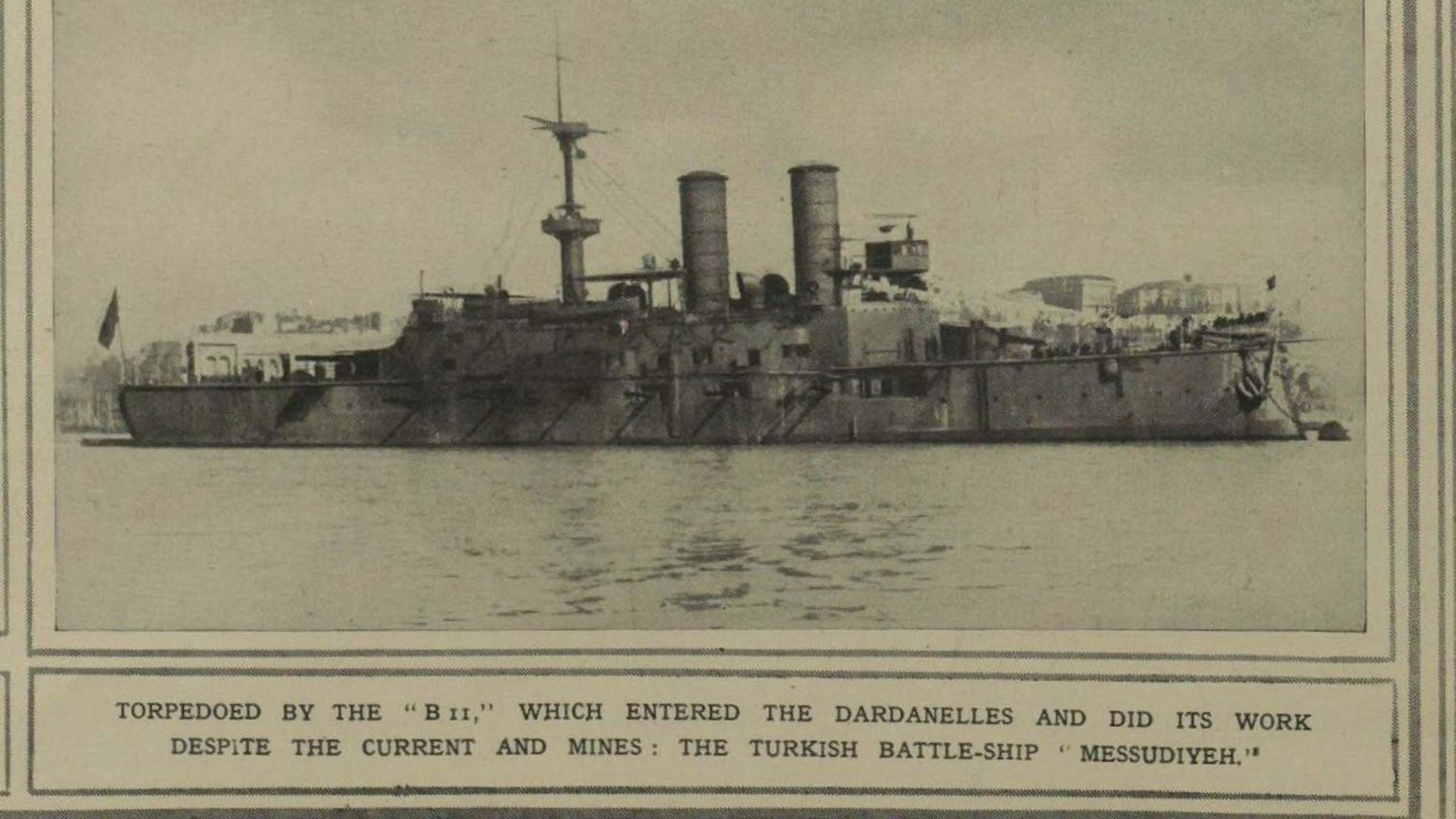
A newly discovered letter from the captain aboard the Mesudiye Battleship sheds light on the events surrounding the ship’s sinking during the Gallipoli Campaign.
The letter dated Dec. 8, 1944, was uncovered by İsmail Sabah, Deputy Director of the Atatürk and Gallipoli Wars Research Center (AÇASAM) at Çanakkale Onsekiz Mart University (ÇOMU). It detailed the harrowing hours after the Mesudiye was torpedoed by the British B-11 submarine on Dec. 13, 1914, and the subsequent rescue efforts that saved the trapped crew members.
The Mesudiye, originally part of the Ottoman Navy’s fleet, had been decommissioned and sent to the Gallipoli region as a stationary artillery battery, anchored in Sarısığlar near Cape Kerez. Despite the crew’s objections to the assignment, arguing that positioning a floating vessel as a fixed battery exposed them to danger — especially from submarines — the orders were carried out.
The ship was positioned as part of the Ottoman defense against naval threats in the Dardanelles Strait.
On the fateful day of Dec. 13, 1914, the Mesudiye was struck by two torpedoes launched by the British B-11 submarine. The explosion capsized the battleship in a matter of minutes, killing 10 officers and 25 soldiers.
Sabah noted that the sinking occurred in an area of the Dardanelles where six mine lines were in place, yet the B-11 had managed to navigate through five of them to strike the Mesudiye.
“Considering the submarine technology of the time, it was a daring act,” Sabah explained.
The subsequent rescue operation, which lasted 36 hours, was a race against time. The Mesudiye had capsized in shallow waters, leaving its lower hull exposed above the surface.
As the crew scrambled for survival, İbrahim Şevki Efendi and other trapped soldiers made noises to alert rescuers to their presence. However, due to lack of appropriate equipment in Çanakkale, a specialized oxygen device and divers had to be dispatched from Istanbul to aid in the rescue.
After enduring the wait, İbrahim Şevki Efendi and the crew were finally freed after 36 hours. Reflecting on his experience in the letter, İbrahim Şevki Efendi described the ordeal of being trapped below deck as water rushed in. He also detailed the efforts to signal their survival and the frantic race to bring help from Istanbul.
In the aftermath, he was sent to Istanbul, where he was assigned to the Selanik Mine Ship. However, he objected to the assignment, fearing further peril at sea. Eventually, İbrahim Şevki Efendi was reassigned to a position with the land forces and continued his service until his retirement.
In 1943, the story of the Mesudiye was recounted on an Ankara Radio program. Following the broadcast, the retired captain sent a letter to journalist Feridun Fazıl Tülbentçi on Dec. 8, 1944, recounting the details of the event.
Sabah emphasized the historical value of the letter, noting that it provides an intimate account of a pivotal moment in Ottoman military history. The letter is now preserved in both private and public archives.